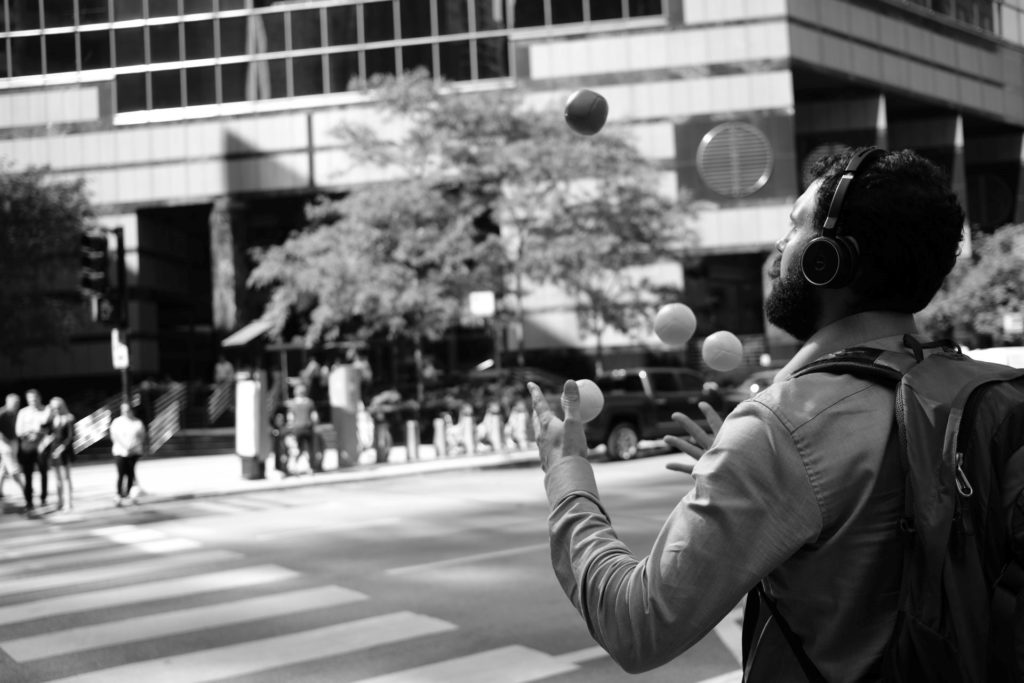Every day we see evidence all around us of life slowly returning to normal. Our children are back in school in-person, workers are gradually returning to offices, and the hustle and bustle of life appear to have returned. For many, this is a drastic change from our year of quarantine and a simpler life, albeit not without its stressors.
With the gradual return to “normal” also comes the associated increase in demands on our time. Often that means doing two or more things at once; an activity often referred to as multitasking. We are completing a business call WHILE driving to pick up the kids at school, or cooking dinner WHILE helping your child with homework WHILE making sure that the new puppy isn’t tearing into the pillows on the sofa.
The colloquial term of multitasking is defined as “computing the execution of various diverse tasks simultaneously” or “the carrying out of two or more tasks at the same time by one person.” While the term suggests the performance of two or more tasks simultaneously, in the 2009 analysis of multitasking in the aviation environment, The Multitasking Myth, instead refers to concurrent task management. The authors acknowledge that simultaneous task demands are not confined to the aviation industry but likely increased exponentially with the industrial age and sky-rocketed in the information age.
Today, our easy access to communications and rapid information in the palm of our hand and the round-the-clock flow of information from television, satellite radios, tablets, and computers adds to the demands on our time. Our electronic devices allow us to make our work more portable, allowing those demands to creep into parts of our lives where they never existed before.
We can primarily meet these multiple task demands with relatively little difficulty or cost. However, multitasking can also pose considerable risks in certain situations, such as driving. Numerous studies have shown an increased risk of automobile accidents in the presence of distracted driving, such as concurrent cell phone use.
Individuals tend to overestimate their ability to multitask, and in fact, the act of multitasking, or concurrent task management, requires more cognitive resources than any one of the tasks alone. In the face of such a load, individuals have several choices, including true simultaneous task execution, interleaving steps of one task with steps of another, reducing task demands by lowering criteria quality, accuracy or completeness, deferring a task completely until another is completed, or omission of a task in its entirety. Only the first choice involves true multitasking.
Interestingly, several studies suggest that playing video games can enhance attention and task-switching abilities. And at least a quarter of the time spent by children in non-academic activities involved using two or more media at the same time. In turn, the associated distraction was found to be related to a reduction in learning.
Overall, multitasking or concurrent task management has its place. In many instances, it’s an unavoidable feature of our day-to-day lives. However, there is a large body of literature showing that multitasking in many situations may not be as efficient as we may believe and, in others, may pose considerable risk.
Dr. Dan DaSilva is a neuropsychologist with specialties in aviation and pediatric neuropsychology. He earned his doctoral degree in clinical psychology from Fairleigh Dickinson University, a masters of education in Counseling Psychology from The University of Massachusetts at Boston, and bachelor’s degree in psychology from Boston College. He completed specialized neuropsychology training through the Veteran’s Administration in a consortium with UMDNJ and University Hospital in Newark, NJ.







